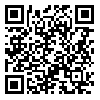Volume 11, Issue 4 (10-2007)
IBJ 2007, 11(4): 215-221 |
Back to browse issues page
Download citation:
BibTeX | RIS | EndNote | Medlars | ProCite | Reference Manager | RefWorks
Send citation to:



BibTeX | RIS | EndNote | Medlars | ProCite | Reference Manager | RefWorks
Send citation to:
Nowrouzi A, Yazdanparast R. G1 Phase Arrest and Apoptosis Induction in Human Thyroid Cancer Cell Line Thr.C1.PI33 by 3-Hydrogenkwadaphnin Isolated from Dendrostellera lessertii. IBJ 2007; 11 (4) :215-221
URL: http://ibj.pasteur.ac.ir/article-1-155-en.html
URL: http://ibj.pasteur.ac.ir/article-1-155-en.html
Abstract:
Dendrostellera lessertii (Thymelaeaceae) is a toxic plant that grows in parts of Iran. The anti-proliferative properties of its crude methanol extract and one of its active components, 3-hydrogenkwadaphnin (3-HK), have been established using several cancer cell lines. Methods: In a further attempt to determine the mode of action, two groups of synchronously growing cells were treated with a single dose of 3-HK (3.5 nM) and/or a single dose of the crude extract (equivalent to 0.36 mg plant powder). Every 8 hours, the percentages of cells within G1, S, and G2-M phases were determined by flow cytometric (FCM) analysis electron microscopic pictures were taken after fixation with 2% glutaraldehyde. Results: Twelve hours after treatments, apoptotic cell death was confirmed by the observation of marked morphological changes of the plasma membrane as microvillar disappearance and the appearance of apoptotic bodies in the treated cells. FCM analyses revealed that the G1 phase arrest was under the influence of the pure substance. Conclusion: The results confirmed the previously drawn conclusion that the raw material and the pure substance from D. lessertii exert their anti-tumor effects through cell cycle arrest at G1 phase and diversion of cell fate toward programmed cell death.
Keywords: Thyroid cancer, Apoptosis, Dendrostellera lessertii, Flow cytometry, Transmission electron microscopy
Type of Study: Full Length/Original Article |
Subject:
Related Fields
| Rights and permissions | |
 |
This work is licensed under a Creative Commons Attribution-NonCommercial 4.0 International License. |








.png)
